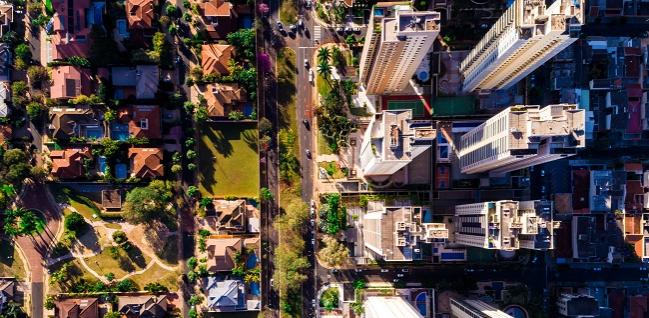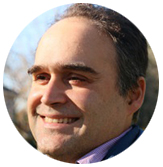Race, Wealth, and Neighborhood Predict Bystander CPR in Children
African-American children in richer areas are no more likely than white children in poor places to benefit from bystander CPR.

African-American children who live in disadvantaged neighborhoods are approximately half as likely as white children in affluent areas to receive bystander CPR after an out-of-hospital cardiac arrest (OHCA), a new analysis finds.
Since swift bystander resuscitation has been shown to be critical to improving outcomes following OHCA, these findings reveal a potentially deadly health disparity, the study authors say.
In the Cardiac Arrest Registry to Enhance Survival (CARES), 59.7% of children in affluent white areas received bystander CPR after OHCA, but that was true for only 32.1% of children in the most disadvantaged African-American neighborhoods, researchers led by Maryam Y. Naim, MD (Children’s Hospital of Philadelphia, PA), report.
Moreover, African-American children in well-educated, affluent, and highly employed communities received the same level of bystander CPR as did white children in neighborhoods facing high unemployment, low income, and low rates of high school graduation (45.7% vs 45.2%).
Naim indicated that the gap in receipt of bystander CPR is particularly worrisome in children.
“We know that bystander CPR is associated with survival after cardiac arrest, and we also know that it’s associated with good functioning after cardiac arrest in children and adults,” she emphasized to TCTMD. “Very often EMS doesn’t come until 9 to 10 minutes after a cardiac arrest, and we know that within 5 minutes of a cardiac arrest you start developing brain injury. Children are probably more susceptible to that because their cardiac arrests are [typically] related to breathing.”
Very often EMS doesn’t come until 9 to 10 minutes after a cardiac arrest, and we know that within 5 minutes of a cardiac arrest you start developing brain injury. Maryam Y. Naim
For the study, published online recently in the Journal of the American Heart Association, the investigators performed an analysis of CARES, which tracks all 911-initiated responses to nontraumatic OHCA and includes a catchment area of more than 115 million people living in 41 states. Bystander CPR was performed in 48% of the 7,086 pediatric OHCAs recorded in the registry between 2013 and 2017. The majority of OHCAs and bystander CPRs occurred in a child’s first year of life.
Researchers created an index of neighborhood risk factors known from previous research to track with lower levels of bystander CPR. These include an African-American population greater than 80%, a high school graduation rate of less than 80%, unemployment above 10%, and a median annual income that is less than $50,000. With each increase in the number of risk factors, an African-American child’s likelihood of receiving bystander CPR declined appreciably, resulting in CPR for less than one-third of children in the most challenged communities.
Compared with white children, Hispanic children (OR 0.78; 95% CI 0.66-0.94) and children of other races/ethnicities (OR 0.54; 95% CI 0.40-0.72) were less likely to receive bystander CPR after an OHCA.
Previous research by Naim’s group found that parents are the most common providers of bystander CPR in children and are highly motivated to do it well. One challenge, though, is that CPR training can be offered at inconvenient times and places or at costs that are unaffordable, which could disadvantage people living in underserved areas.
“It’s especially tragic if children are dying of cardiac arrest because of their zip code,” commented Benjamin S. Abella, MD (University of Pennsylvania, Philadelphia), who was not involved in the study. Abella is the medical director for the Mobile CPR Project in Philadelphia, which travels to neighborhood gathering places such as churches and offers free CPR training. The idea is to meet people where they are rather than requiring them to travel to an unfamiliar location.
It’s especially tragic if children are dying of cardiac arrest because of their zip code. Benjamin S. Abella
Like Naim, Comilla Sasson, MD (University of Colorado School of Medicine, Aurora), has documented disparities in use of bystander CPR, both in primarily Latino communities relative to white communities and among African-American adults.
“How are we going to truly break the cycle?” asked Sasson. “It’s not just looking at how we get adults trained [in performing CPR], it’s truly thinking about this as a family-based issue. How do we incorporate this into all of the other social services that we provide like food, education, and health? Now I would include basic training in how to take care of children and infants when they have a medical emergency.”
In that spirit, Naim is taking active steps to ensure that the data in this paper lead to concrete change. “We’re working with the Citizen CPR Foundation, and we have one committee specifically involved in bridging this disparity and getting rid of it,” Naim said. “A lot of cardiac arrests happen in babies . . . . It could be that babies are still sleeping with their parents and end up getting smothered in bed. So that could be a potential intervention, sleep education and bystander CPR education” in disadvantaged neighborhoods.
Marcus A. Banks is the 2019 recipient of the Jason Kahn Fellowship in Medical Journalism. He is currently a master’s…
Read Full BioSources
Naim MY, Griffis HM, Burke RV, et al. Race/ethnicity and neighborhood characteristics are associated with bystander cardiopulmonary resuscitation in pediatric out-of-hospital cardiac arrest in the United States: a study from CARES. J Am Heart Assoc. 2019;8:e012637.
Disclosures
- Naim reports no relevant disclosures.
- Abella reports receiving funding from the Independence Blue Cross Foundation to develop the Mobile CPR Project in Philadelphia.
- Sasson reports being the Vice President for Science and Innovation in Emergency Cardiovascular Care at the American Heart Association.


Comments